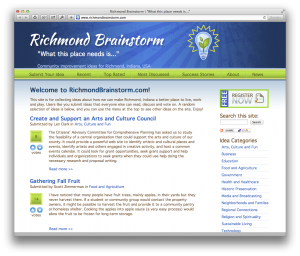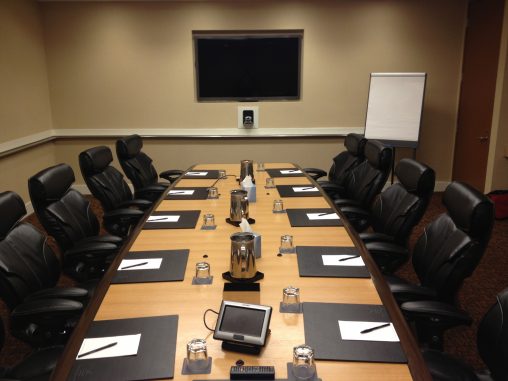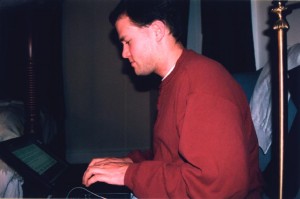 Five years ago this month I launched the community improvement website RichmondBrainstorm.com. The site allowed users to submit ideas for ways to make Richmond, Indiana a better place, allowed other users to discuss and vote on those ideas, and shared success stories of ideas that had been implemented. I created the site because I think it's important for a given community to shape its own course for the future instead of waiting for solutions from state and national governments, and because I was tired of hearing good, creative ideas from others that never seemed to get the attention or visibility they deserved.
Five years ago this month I launched the community improvement website RichmondBrainstorm.com. The site allowed users to submit ideas for ways to make Richmond, Indiana a better place, allowed other users to discuss and vote on those ideas, and shared success stories of ideas that had been implemented. I created the site because I think it's important for a given community to shape its own course for the future instead of waiting for solutions from state and national governments, and because I was tired of hearing good, creative ideas from others that never seemed to get the attention or visibility they deserved.
In the time since, some 86 community improvement ideas were submitted and discussed, and a number of the ideas became real projects that were implemented. The site got over 140,000 visits from around 45,000 unique visitors. I've also received contact from people other communities around the country asking for help to create a similar resource in their city, and so the idea of an online community improvement idea inventory seems to itself have become an idea worth spreading.
But, after an initial period of significant activity, the Richmond Brainstorm site had become largely dormant, with no new ideas submitted to it in close to a year. Over the years I've regularly talked to local community development organizations who have said the concept of the site is an exciting one and could even be integrated into their own efforts at prompting further conversations and action, but as yet Richmond does not seem to be a place where most of those kinds of conversations want to happen online, for better or worse. That combined with the time that it takes to keep the site's software current, deal with spammers and perform other administrative tasks has begun to outweigh the value that I think RichmondBrainstorm.com is currently bringing to the community.
So, as of today I'm shutting the site down.



 Occasionally people ask me how I got started working in the world of computers and Internet technology. There were a lot of different factors - from my own curiosity to the learning and discovering my parents and teachers encouraged to the timing of what tools/tech became available as I grew up. I don't think I can hold one particular decision or moment up over another as key, but I thought I'd try to hit some of the highlights.
Occasionally people ask me how I got started working in the world of computers and Internet technology. There were a lot of different factors - from my own curiosity to the learning and discovering my parents and teachers encouraged to the timing of what tools/tech became available as I grew up. I don't think I can hold one particular decision or moment up over another as key, but I thought I'd try to hit some of the highlights.